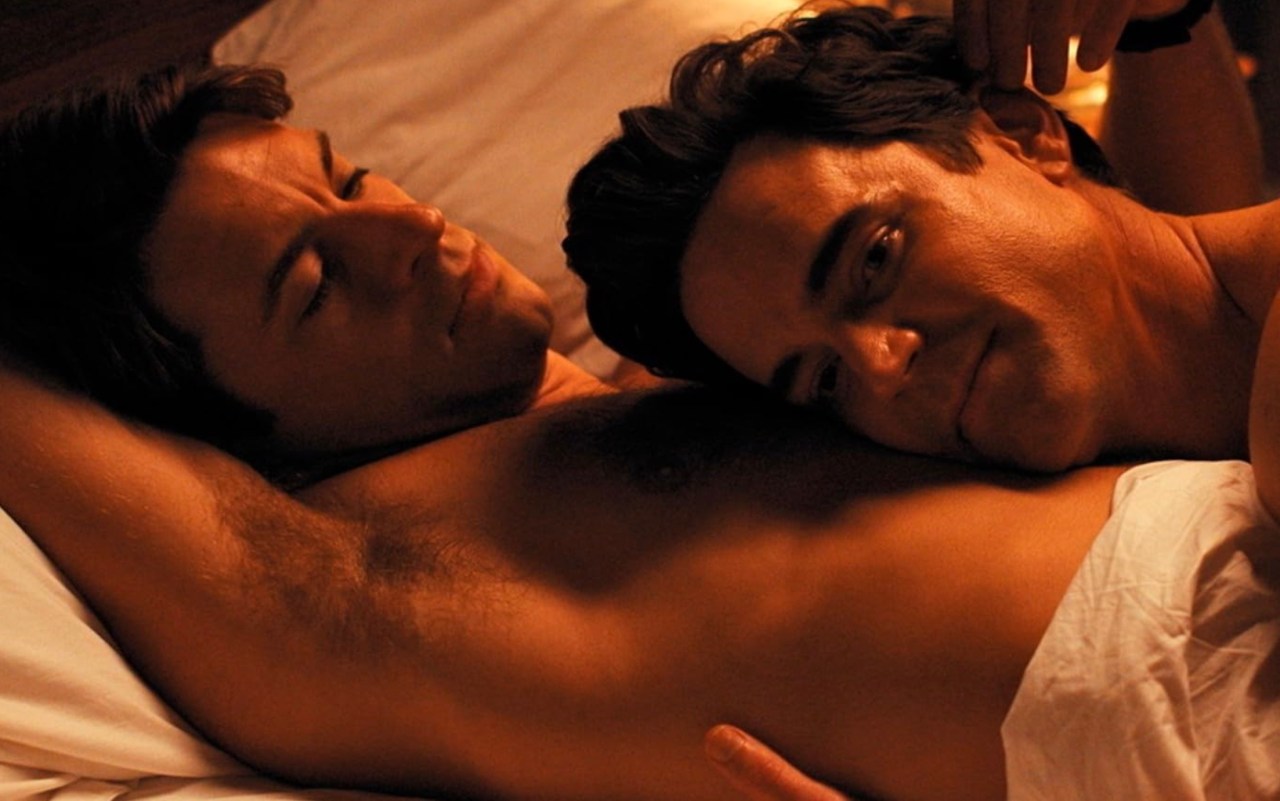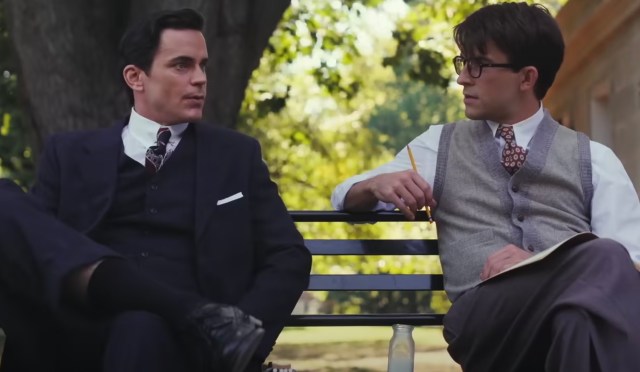
‘Fellow Travelers’ Review: Matt Bomer and Jonathan Bailey Bring the Heat
By ![]() Josh Lezmi
Josh Lezmi
A decades-spanning, sizzling tale of forbidden love wrapped up in the political happenings of the ’50s Red Scare to the ’80s AIDS crisis.
From the Oscar-nominated writer/producer behind Philadelphia and Homeland Ron Nyswaner comes Fellow Travelers — based on the Thomas Mallon novel of the same name. The narrative chronicles the romance between State Department Official Hawkins Fuller (Matt Bomer) and recent Fordham Graduate Tim Laughlin (Jonathan Bailey). The former is an ambitious, jaded, and charming politician who avoids romantic entanglements — opting instead for aggressive sexual encounters with various men he can so easily captivate. The latter is a devout Catholic and idealistic young man with an unwavering moral compass and a swoon-worthy sense of comfort with emotional vulnerability.
Their polar personalities make for a sizzling decades-spanning affair that starts at the onset of a McCarthy-Era Washington — as Joseph McCarthy and Roy Cohn declare war on “sexual subversives and deviants.” Their on-and-off-again romance bridges four decades. The Vietnam War protests of the ‘60s. The Fire Island parties of the hedonistic ‘70s set to the tune of Donna Summer’s “MacArthur Park.” And, eventually, the ‘80s AIDS crisis, bringing viewers into Laughlins’ unadorned yet cozy apartment with an apropos Bette Midler Vinyl hanging on the wall.
It’s the subtle surrounding details that work to construct and sell each era. From the fashion to the music, the limited series deftly manages its non-linear narrative, shifting between various sociopolitical movements with snapshot-like impressions — always centering the love story between Laughlin and Fuller as its beacon, as opposed to futility trying to capture the full spectrum of each political upheaval.
The periods at play have been dissected at length; thus, here, they serve as a backdrop to the ever-adapting romance. This tale is, first and foremost, a love story — with the subtext of a political thriller. And, it is that stifling bureaucratic undertone, the evershifting zeitgeists that drives a sometimes toxic yet no less tantalizing — a beaten down but no less beautiful — love.

While the story, at times, grows a bit prosaic, trudging through highly-traversed historical waters, Bomer and Bailey elevate the slow-moving script, as their chemistry oozes out of their pores with both an erotic intensity and romantic tenderness. Their sex scenes — though frequent — are not peripheral to the story (as is often the case in the soft-core porn content that has come to define Netflix originals) but integral. Rather than serving as arousal-building devices to keep audiences engaged, the intimate moments (to put it modestly) operate as a window into the ever-changing state of Laughlin and Fuller’s dynamic.
From the aggressive thrusting — as if each orgasm will dispel the homosexuality — to the more kinky kanoodling — indicative of mutual comfort in their physical intimacy — to the heavy-breathing allure of fierce eye contact — suggestive of passion and romance outside pure arousal, the sex scenes are at once spicy and significant. Erotic and essential. If the walls could talk, they’d be moaning in tandem.
This series gives HBO a run for its money, creating steamy, sultry, and satisfying sex scenes that feel authentic and gloriously untethered to the sensitivities of the cis-het viewing population. It’s not for them. This one is unabashedly for the Alphabet Mafia. Yet, it’s not just in the boudoir that their palpable attraction subsists. It’s in each gaze from across the room. Each time Laughlin’s longing eyes follow Fuller out the door. Each time Fuller leaves Hawkins to lead his double life with his wife Lucy (Allison Williams), a sort of despondent expression crawls across his face — broadcasting his instinctual need to maintain a certain persona that is at odds with his truth. Bomer and Bailey give career-defining performances in the Showtime series.

Bomer plays a twisted game of moral bartering (sacrificing some to protect others) with a facade of detachment. He operates within a broken system, weaving through its nepotistic and systemic injustices with unfettered agility. This is who he has become to protect himself, to survive in the dog-eat-dog landscape akin to the concurrent Lavender and Red Scares. Yet, he is not without heart. He has simply learned to bury his feelings in service to the life-or-death game he will win. With each drink, with each cigarette, with each trick he pushes into a stall, he drowns the emotions that will only complicate an already forbidden existence.
Bailey is a bright-eyed optimist whose righteousness is undaunted by a government that would push him to the fringes without hesitance. He loves fully. He is unafraid to yearn for a life with the man of his dreams, yet must contend with a religious upbringing that has him at odds. How could something that feels so right, so pure be so wrong? Whether curling up on the bed with toes turned inward as he concocts his next social justice mission or snuggling into Fuller’s chest searching for the pillowy spot, he is the adorable to Fuller’s anguished. He is the hopeful to Fuller’s hopelessness.
Throughout time, old friends and new foes emerge, old dreams and new truths surface, old habits and new traditions enter the fray. Yet, Fuller and Laughlin remain inextricably linked. And, when the curtain closes on the final act, viewers are left with an inevitable but no less moving conclusion.
Fellow Travelers debuts on Paramount+ with a Showtime plan on October 27 before its linear release begins on October 29 at 9:00 pm EST on Showtime.











